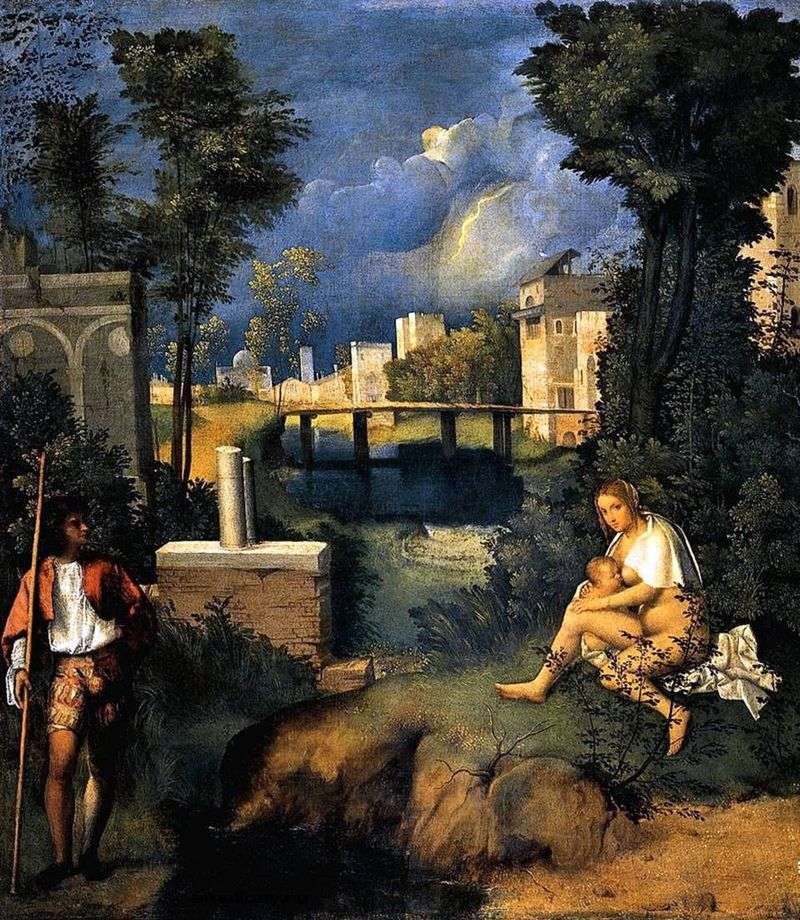
“Storm” – one of the most famous paintings by the Venetian artist Giorgione. Currently stored in the Gallery of the Academy in Venice. Giorgione did not give this picture a name. Around 1530, she was known as “Landscape on canvas with a storm, a gypsy woman and a soldier”, but because of the ribbed discharge of lightning that illuminates the whole scene, the picture remained in history under the name “Storm”. The picture depicts an idyllic rural landscape with a river, trees and ruins.
The cloud-bound sky is consecrated by a flash of lightning, foreshadowing an imminent storm. The woman sitting on the right breastfeeds the baby. She is completely naked and only her shoulders are covered with white matter, perhaps symbolizing purity and innocence. Her rounded belly, full breasts and act of feeding in turn, probably symbolize fertility. An allusion to the Virgin Mary is also evident. The lower left of the picture shows a man, perhaps a soldier. He stands in the position of a counterpoint and holds in his right hand a long staff or a pike.
Smiling, he looks to the left, but it is unlikely that he looks at the woman. Various researchers called him a soldier, a shepherd, a gypsy or a bachelor. Columns behind him can symbolize strength and constancy, but the fact that they are broken can be a symbol of death.
With the help of an X-ray survey, it was established that in place of the man Giorgione originally planned to write another naked woman, and the whole picture was written in several stages. It seems that everything is in the picture in anticipation of the storm. Colors are relaxed.
Green and blue shades predominate. The landscape dominates people. Many researchers believe that the plot here is secondary, and the original created by Giorgione in the picture atmosphere. Until now, there is no unambiguous interpretation of this picture. It is assumed that it can depict the flight to Egypt, the mythological scene, or even Adam and Eve with Cain, just expelled from paradise, symbolized by the city in the background. God in this case is symbolized by lightning, and broken columns symbolize death, as a payment for original sin.
 La Tempesta by Giorgione
La Tempesta by Giorgione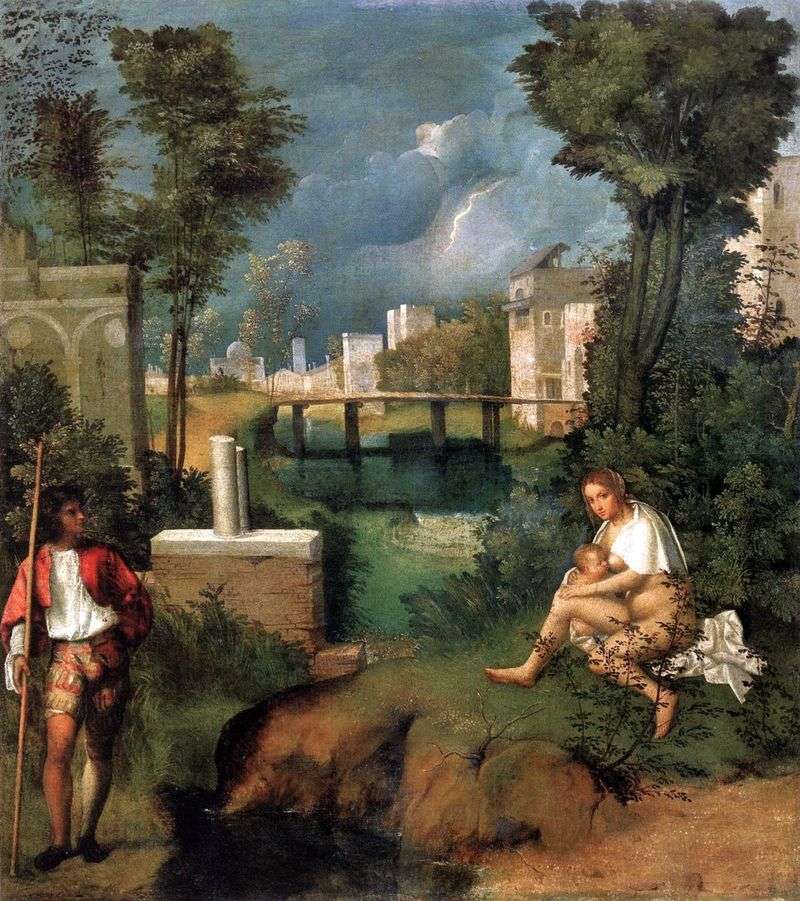 Thunderstorm by Giorgione
Thunderstorm by Giorgione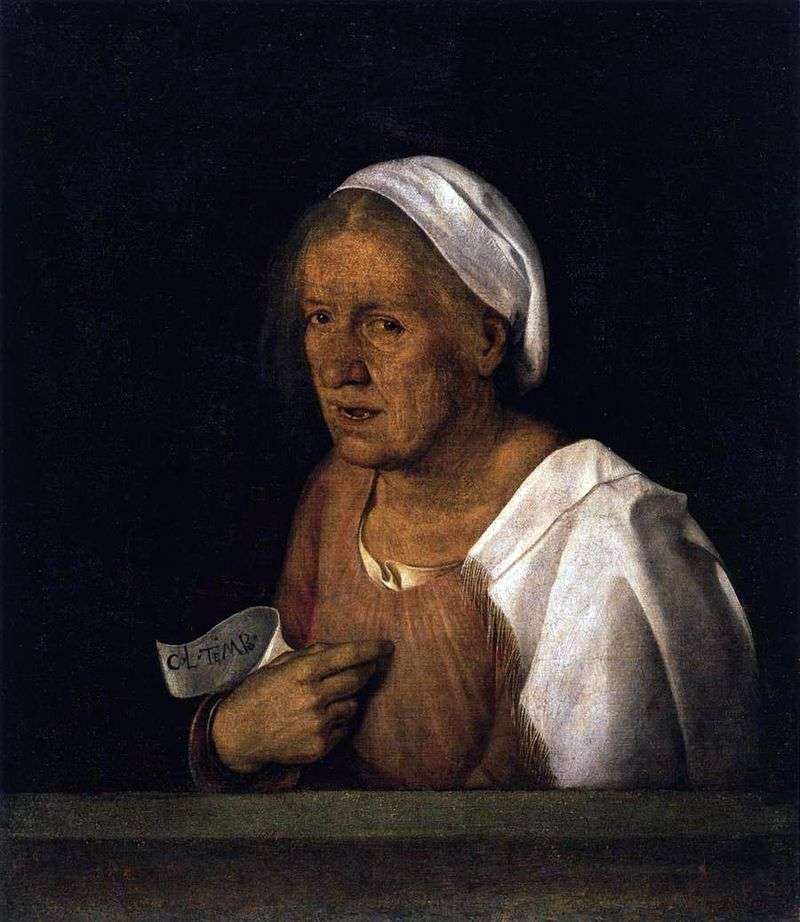 The old woman by Giorgione
The old woman by Giorgione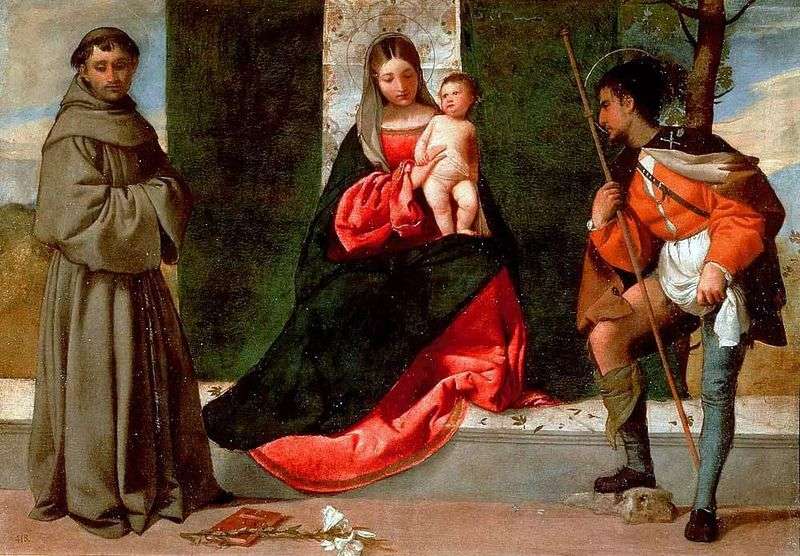 Madonna and Child, Saints Rock and Anthony of Padua by Giorgione
Madonna and Child, Saints Rock and Anthony of Padua by Giorgione Madonna and Child in the Landscape by Giorgione-Barbarelli-da Castelfranco
Madonna and Child in the Landscape by Giorgione-Barbarelli-da Castelfranco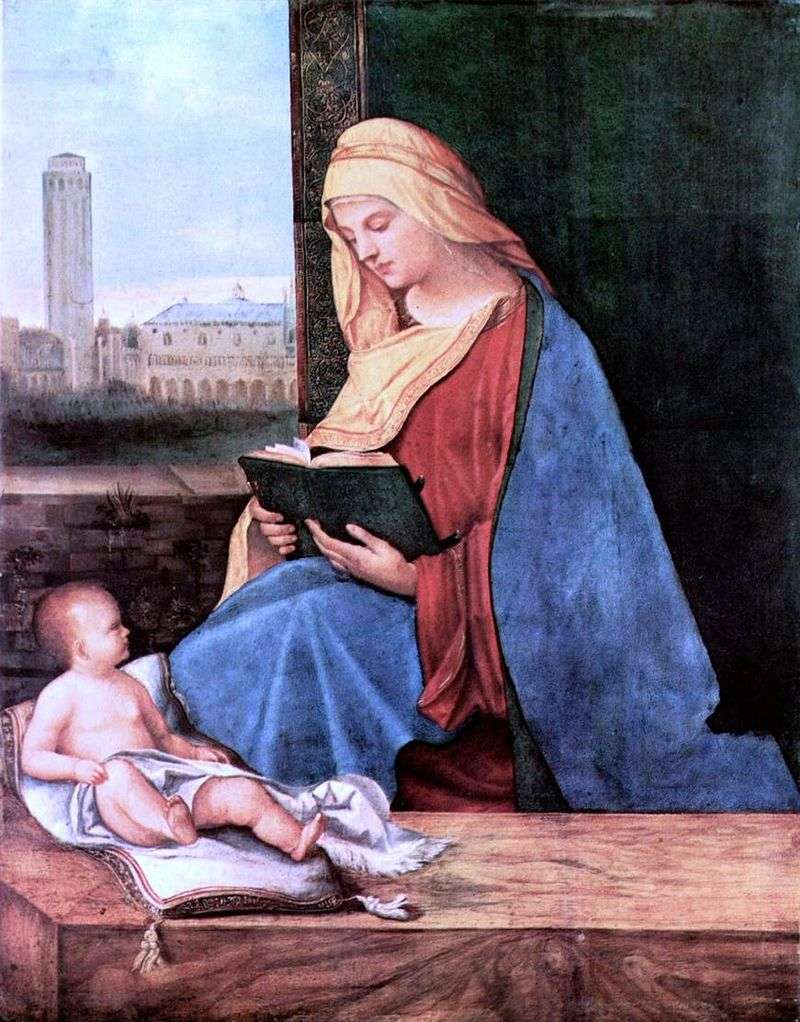 Reading Madonna by Giorgione
Reading Madonna by Giorgione Country Concert by Giorgione
Country Concert by Giorgione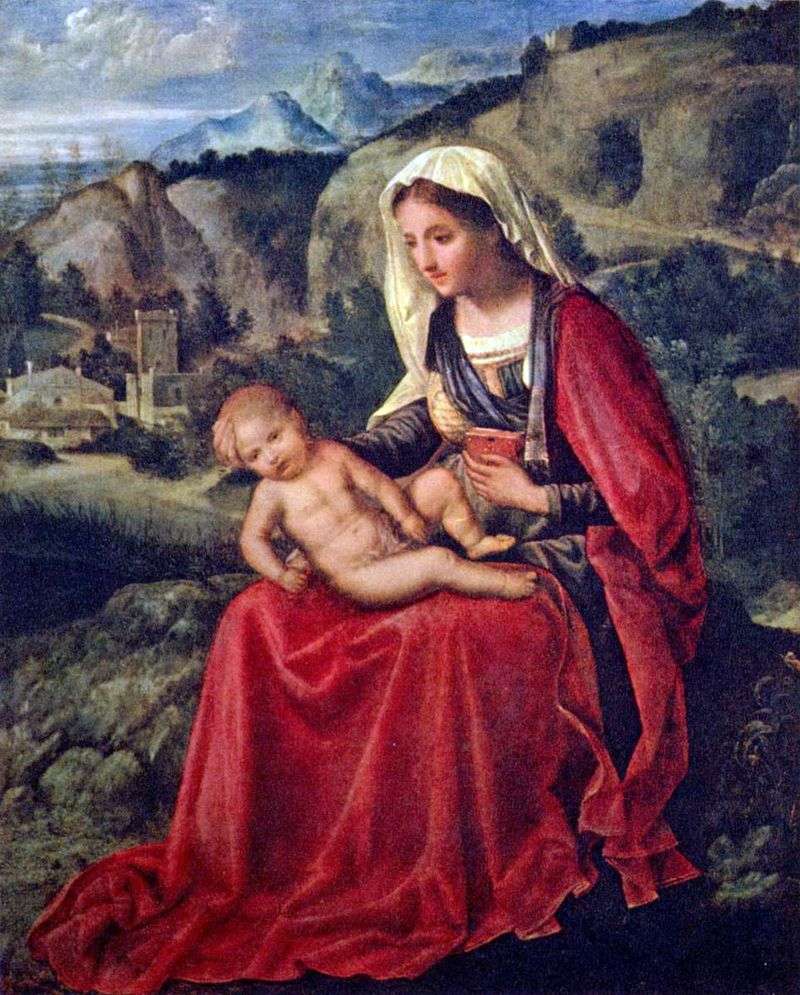 Virgin Mary with a baby in the background of the landscape by Giorgione
Virgin Mary with a baby in the background of the landscape by Giorgione